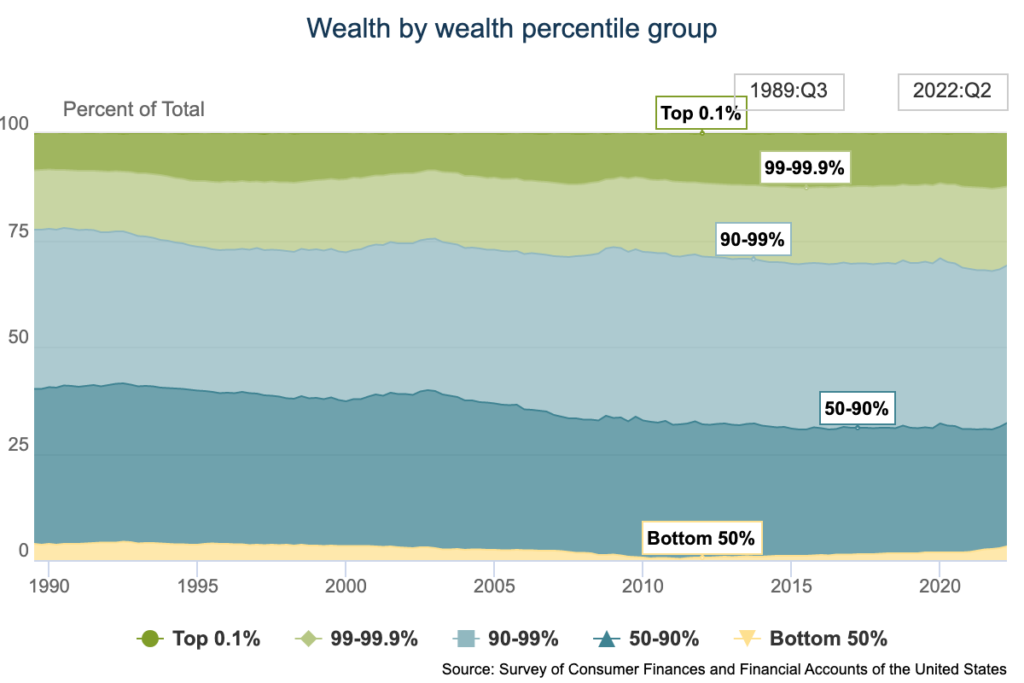While covid-19 has transitioned employers to more permanently instating hybrid working models first introduced as pandemic measures, could this lead to further reforms to address employee burn out in the US? First it’s important to acknowledge how we came to the standard of the 40 hour work week in the first place. Originally passed in 1938 the Fair Labor Standards Act codified worker protections such as 44 (later amended to 40) hour work weeks and overtime compensation requirements. While at the time it was a huge success for industrial workers in a time of great wealth disparities between the upper and lower classes, why has it not been further modified to account for societal change and current disparities?

The above table provided by The Federal Reserve shows in green the top 1% share of wealth growing overtime since 1990, resulting in a smaller and smaller middle class. This growing inequality has been compared to levels during the US gilded age and the French Revolution but, due to less reliable data at those times it is difficult to confirm.
To translate how this relates to the growing demand for the four day work week, people are being overworked for less and less of market share and are realizing they are worth more. When the 1% profits off of underpaying and overworking employees to produce larger shares of wealth, the long told tale of the American dream is dying. With flexible work schedules as pandemic accommodations generally showing increased productivity and greater satisfaction, the transition “back to normal” is not happening without resistance. Along with the great resignation employees have played an uno reverse card on companies by taking back their bargaining power in numerous industries. Many roles such as teaching and nursing that cannot be performed from home are yearning for the flexibility that their peers have gained in their careers and with existing shortages, are in a position to not except otherwise. Below are some links that speculate on more of the benefits of the 4 day standard and I am excited to see where this goes.
https://www.mercer.com/our-thinking/career/four-day-workweek-the-cure-for-burnout.html https://fortune.com/2022/09/22/battle-for-talent-job-recruitment-4-day-week/ https://www.theguardian.com/commentisfree/2022/jul/29/could-long-covid-lead-to-the-rise-of-a-four-day-work-week
Payton, love your use of “uno reverse card” in your post and it makes me think of Stephen Thrashers answer in the public event we did (I think it was the public event, but it could have been in our class) that unionizing is one tangible action to work toward equity because it puts the power into the hands of the worker. I think this directly connects to the demands for a four day work week.